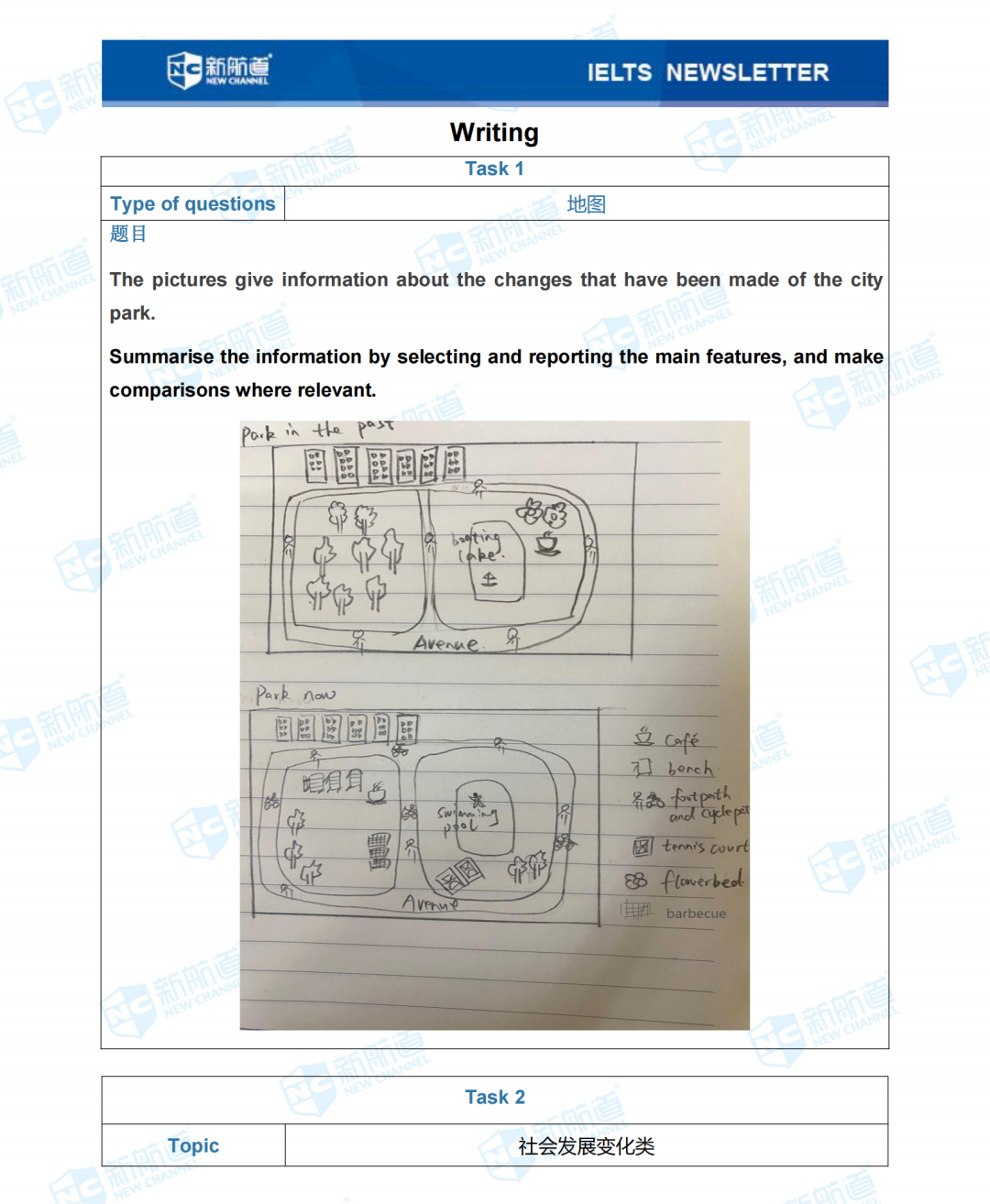
上海新航道雅思培训班 小编为大家整理了2021年6月19日雅思考试阅读机经真题答案回忆,每次考试后新航道雅思 小编会在1-2天内更新托福机经回忆
READING
Passage 1
Topic
History of coffe
Coffle grown worldwide can trace its heritage back centuries to the ancient coffee forests on the Ethiopian plateau. There, legend says the goat herder Kaldi first discovered the potential of these beloved beans. The story goes that that Kaldi discovered coffee after he noticed that after eating the berries from a certain tree, his goats became so energetic that they did not want to sleep at night.
Kaldi reported his findings to the abbot of the local monastery, who made a drink with the berries and found that it kept him alert through the long hours of evening prayer. The abbot shared his discovery with the other monks at the monastery, and knowledge of the energizing berries began to spread.
As word moved east and coffee reached the Arabian peninsula, it began a joumey which would bring these beans across the globe.
Coffee culivation and trade began on the Arabian Peninsula. By the 15th century, coffee was being grown in the Yemeni district of Arabia and by the 16th century it was known in Persia, Egypt, Synia, and Turkey.
Coffe was not only enjoyed in homes, but also in the many public coffee houses called qahveh khaneh - which began to appear in clties across the Near East. The popularity of the coffee houses was unequaled and people frequented them for all kinds of social actlvity.
Not only did the patrons drink coffee and engage in conversation, but they also listened to music, watched performers. played chess and kept current on the news. Coffee houses quickly became such an important center for the exchange of information that they were often referred to as“Schools of the Wise."
With thousands of pilgrimns visiting the holy city of Mecca each year from all over the world, knowledge of this "wine of Araby" began to spread.
European travelers to the Near East brought back stories of an unusual dark black beverage. By the 17th century, coffee had made its way to Europe and was becoming popular across the continent.
Some people reacted to this new beverage with suspicion or fear, calling it the “bitter invention of Satan." The local clergy condemned coffee when it came to Venice in 1615.
The controversy was so great that Pope Clement ViII was asked to intervene. He decided to taste the beverage for himself before making a decision, and found the drink satisfying that he gave it papal approval.
Despite such controversy, coffee houses were quickly becoming centers of social activity and communication in the major cities of England, Austria, France, Germany and Holland.
In England "penny universities" sprang up, so called because for the price of a penny one could purchase a cup of coffee and engage in stimulating conversation.
Coffee began to replace the common breakfast drink beverages of the time一beer and wine. Those who drank coffee instead of alcohol began the day alert and energized, and not surprisingly. the quality of their work was greatly improved. (We like to think of this a precursor to the modem oflice coffee serice.)
By the mid-17th century, there were over 300 coffee houses in London, many of which attracted like-minded patrons, including merchants, shippers, brokers and artists.
Many businesses grew out of these specialized coffe houses. Lloyd's of London, for example, came into existence at the Edward Lloyd's Coffee House.
In the mid-1600's, coffee was brought to New Amsterdam, later called New York by the British.
Though coffee houses rapidly began to appear, tea continued to be the favored drink in the New World until 1773, when the colonists revlted against a heavy tax on tea imposed by King George II The revolt, known as the Boston Tea Party, would forever change the : American drinking preference to offe.
As demand for the beverage continued to spread, there was ferce competition to cultivate coffee outside of Arabia.
The Dutch finally got seedlings in the ltter half of the 17th century. Their frst attempts to plant them in India failed, but they were successful with their efforts in Batavia, on the island of Java in what is now Indonesia.
The plants thrived and soon the Dutch had a productive and growing trade in offee. They then expanded the cultivation of coffee trees to the islands of Sumatra and Celebes.
In 1714, the Mayor of Amsterdam presented a git of a young coffee plant to King Louis XIV of France. The King ordered it to be planted in the Royal Botanical Garden in Paris. I 1723, a young naval oficer, Gabriel de Clieu obtained a seeding from the King's plant.
Despite a challenging voyage - complete with horrendous weather, a saboteur who tried to destroy the seedling, and a pirate attack - he managed to transport it safely to Martinique.
Once planted, the seedling not only thrived, but it's credited with the spread of over 18 million coffee trees on the island of Martinique in the next 50 years. Even more incredible is that this seedling was the parent of all coffee trees throughout the Caribbean, South and Central America.
The famed Brazilian coffe owes its existence to Francisco de Mello Palheta, who was sent by the emperor to French Guiana to get coffee seedlings. The French were not wlling to share, but the French Govemor's wife, captivated by his good looks, gave him a large bouquet of flowers before he left- buried inside were enough coffee seeds to begin what is today a bllin-dollar industry.
Missionaries and travelers, traders and colonists continued to carry coffee seeds to new lands,and coffee trees were planted worldwide. Plantations were established in magnificent tropical forests and on rugged mountain highlands. Some crops flourished, while others were shot-lived. New nations were established on coffee economies.
Fortunes were made and lost. By the end of the 18th century, coffee had become one of the world's most profitable export crops. After crude oil, coffee is the most sought commodity in the world.
1-6为填空题
1.goats
2.monastery
3.companies
4.king
5.flowers
6.tea
7-13为判断题
暂无
Passage 2
Topic
The differences between youth soccer and street soccer in USA
14-19为匹配题
14 a contrast between street soccer and youth soccer on different positions E
15 an incident that led to increasing concerm of safety issues C
16 the difference on the ways to decide the leadership
17 unban changes that led to reduction of street soccer
18 a lesson that a failure teaches in the street soccer
19 the reason why people think a coach is necessary in playing soccer D
20-23为多选题
20-21 C E
22-23 D E
24-26为填空题
Freedom is the main concemn of playing soccer. Players in the youth team have a 24
principle that they need to have a postive atitude. So after the game they receive the
same 25 reward no matter what they have achieved in the game.
There is another difference between youth soccer and street soccer. Although street
soccer emphasizes score, they will not keep the 26 record after the game.
Pasage3
Topic
Facial expressions
A. That verbal language did not work proper.
B. Mimic other's behavior
C. Cooperation makes the task harder
D. Lack of cooperation will cause anger
E. Know the task and have a dlear view
F. Depend on whether or not the task is shared.
G. We cooperate people that we do not know.
27-32为匹配题
27 driving car is a situation G
28 dancing with partner is a sitation A
29 model making E
30 feling of exclude was involved in a situation B
31 computer experiment C
32 the weight of boxes F
33-34为选择题
33 Watch the film of ballet and Capoeira
A the dancer fllow the movement in the flm
B the dancer compare the movement in the flm and what they do
C the same pattem of the brain
D the same reaction of area
34 In a survey by Natalie,the subject
A influenced by factor that they are told to ignore
B has to distinguish the color green and red
C differ from left handed and right-handed
D ifluenced by the time in hand
35-40为判断题
35.The trivial cooperation should use polite language↓(NOT GIVEN)
36. Human alter the grammar to mirror other people. (YES )
37. People failed to follow the instruction will make the task time longer. (YES)
38. Copying other people's behavior is interpreted a kind of aggression. (NO)
39. In the computer experiment, the subject disrespect the action. (NO)
40. Human cooperation is instinctive rather than conscious. (YES)








